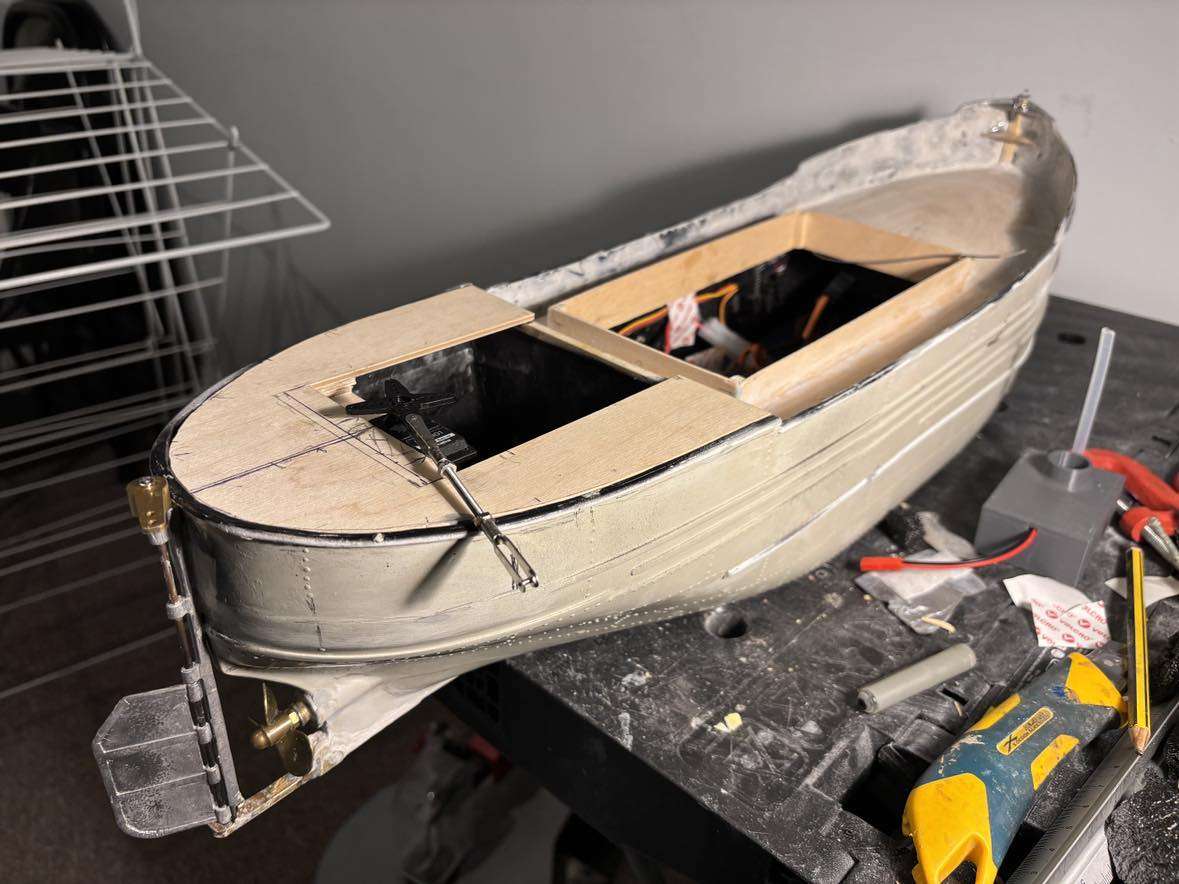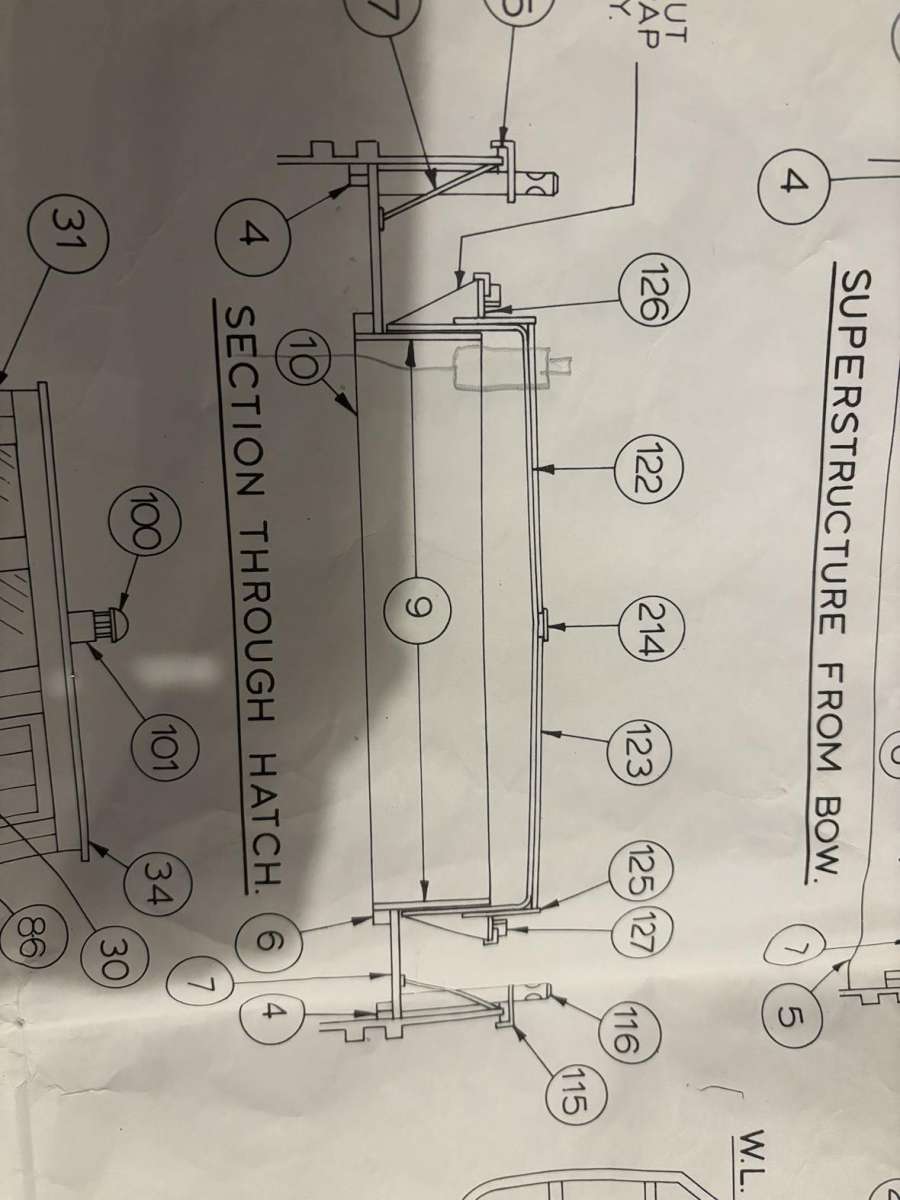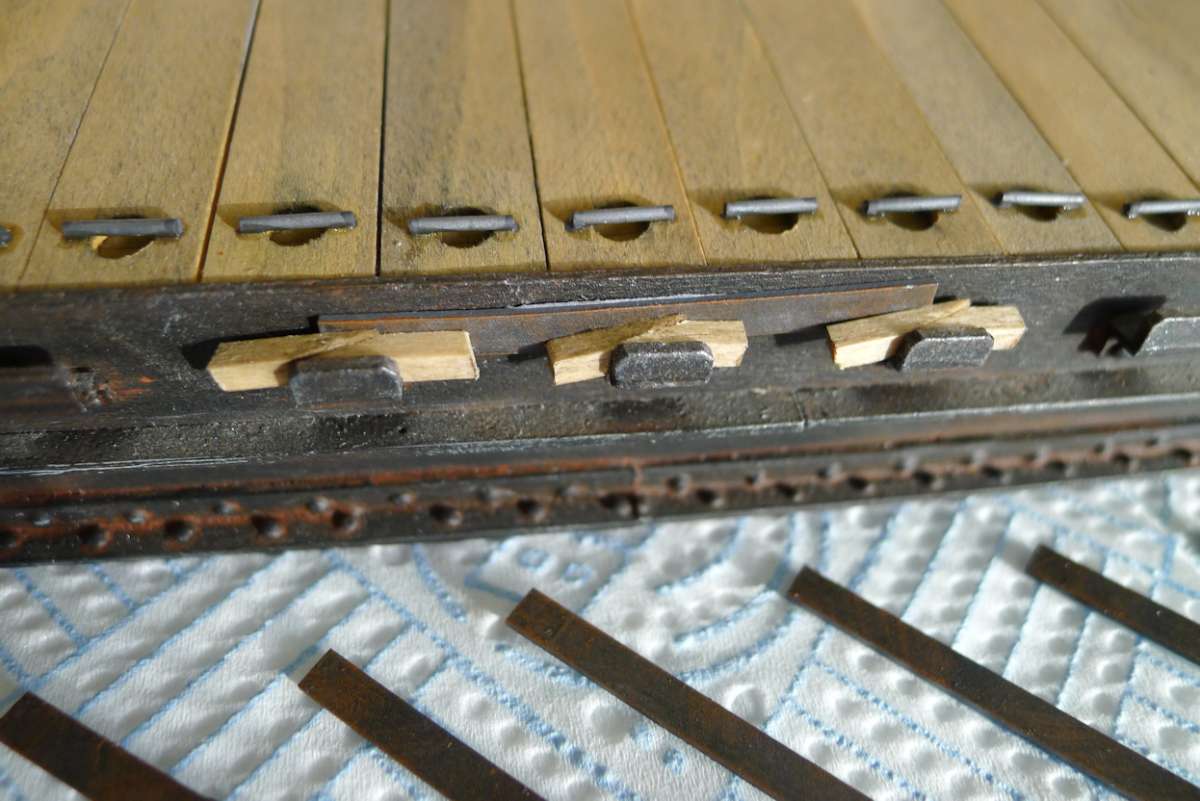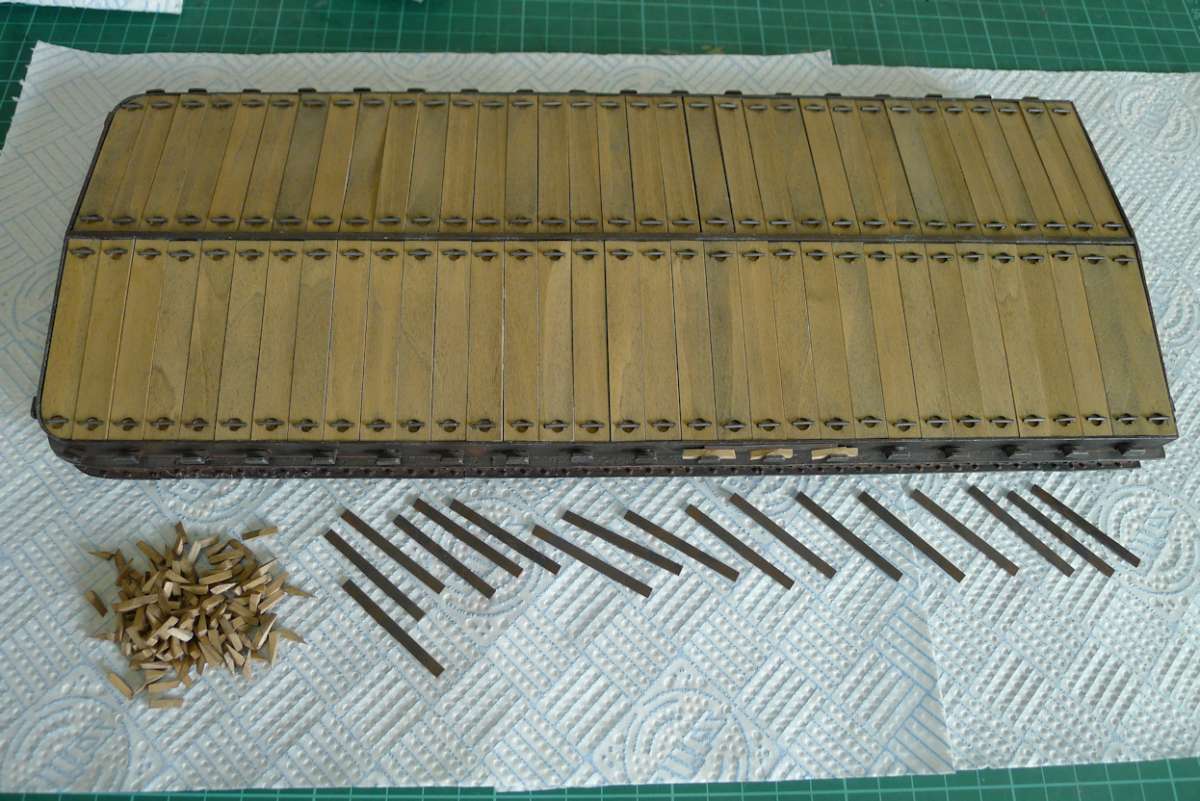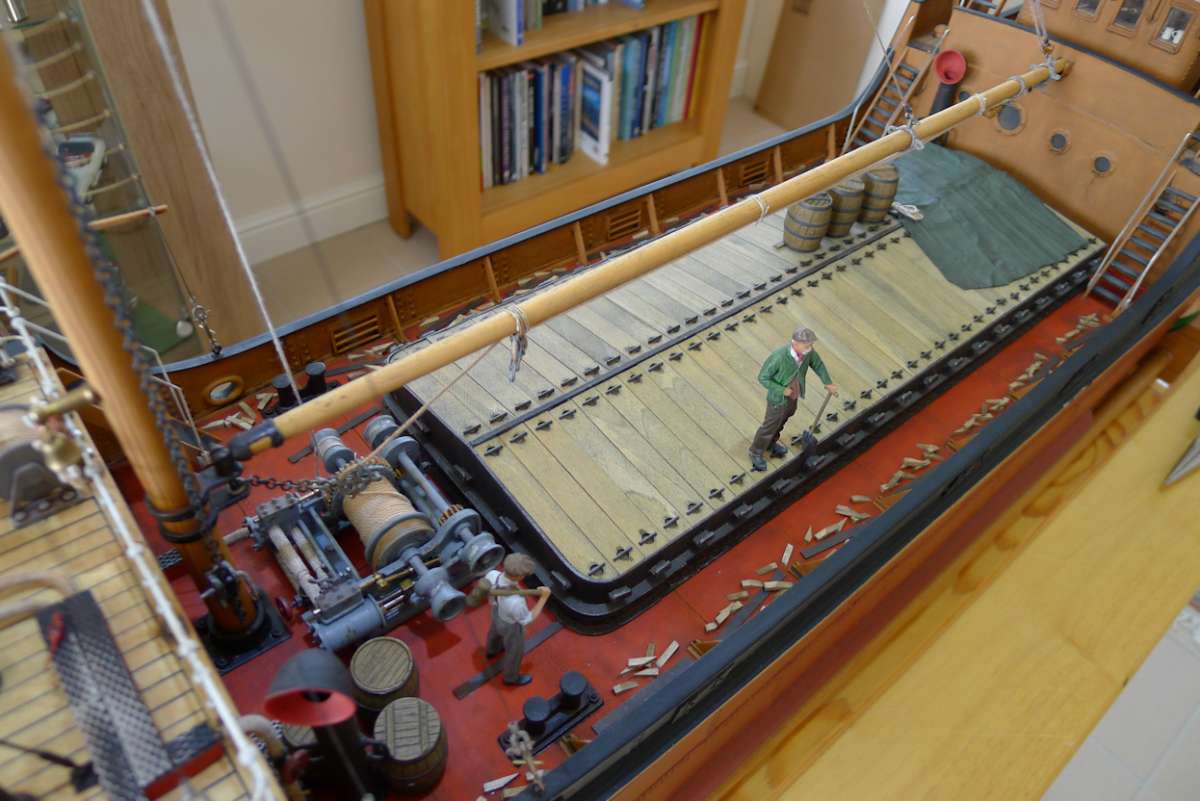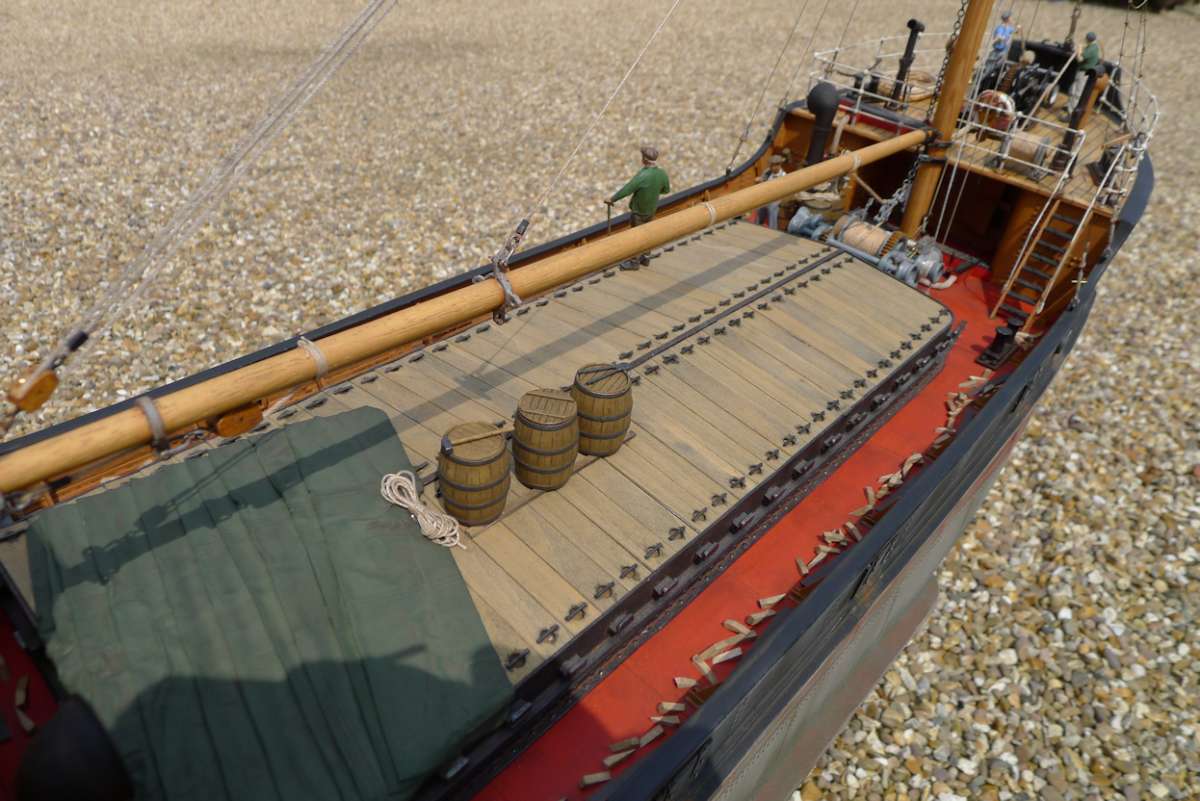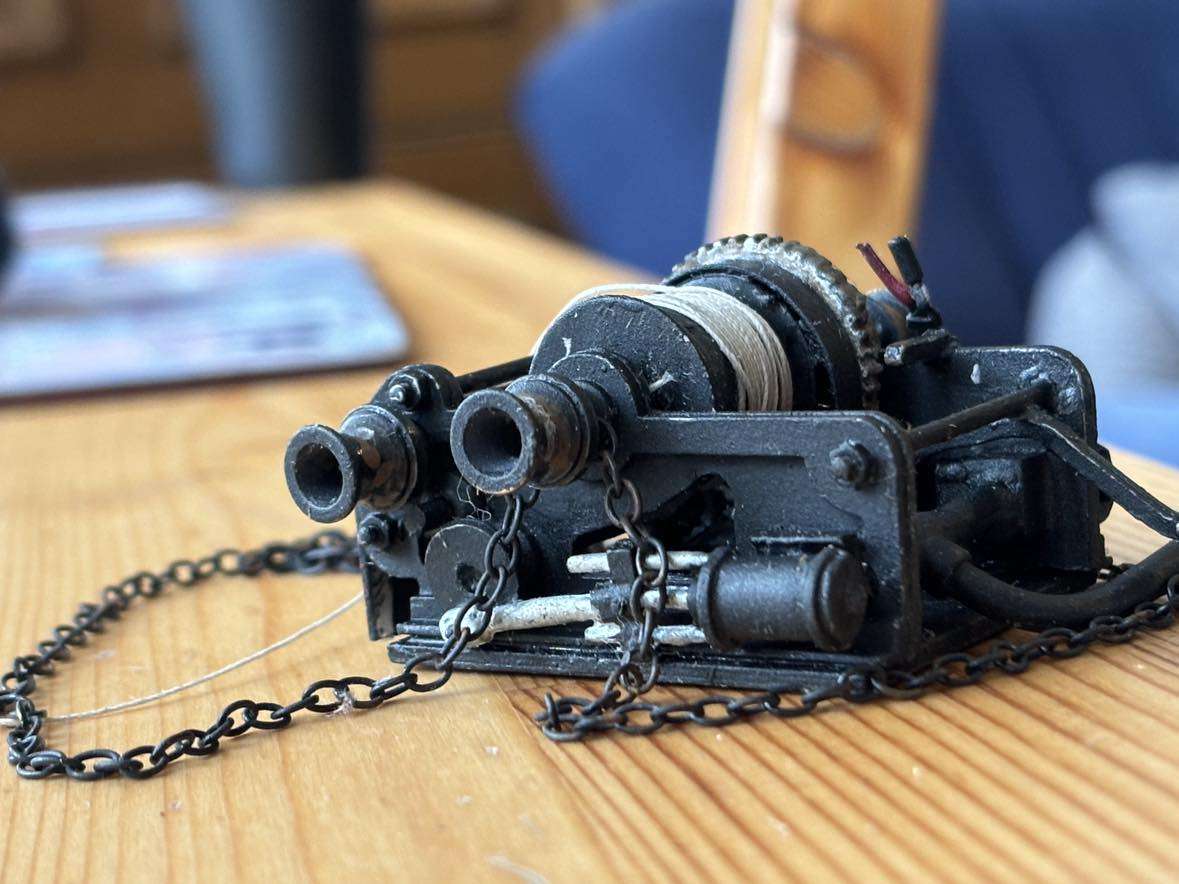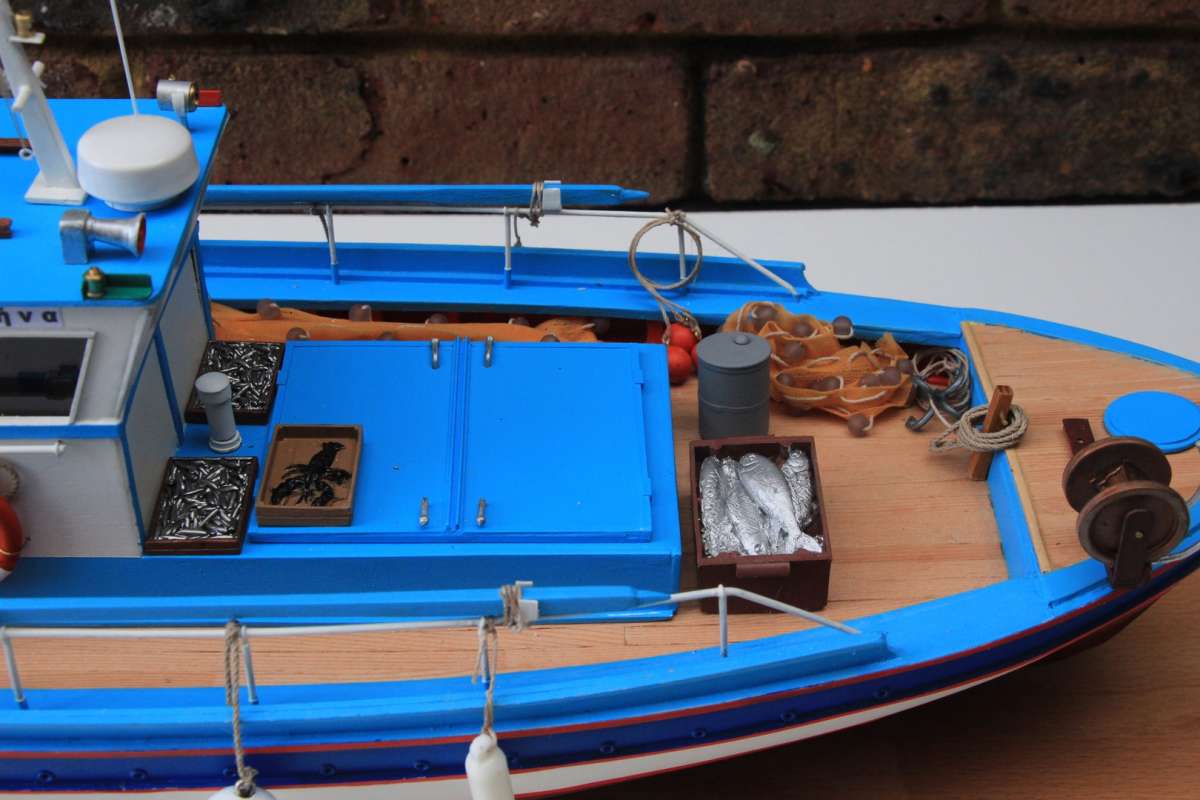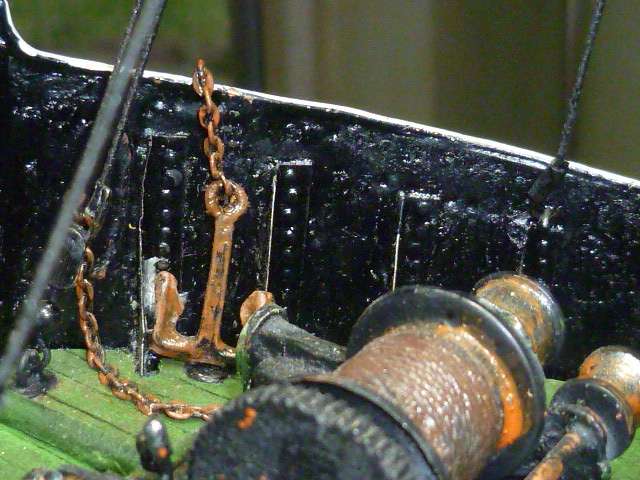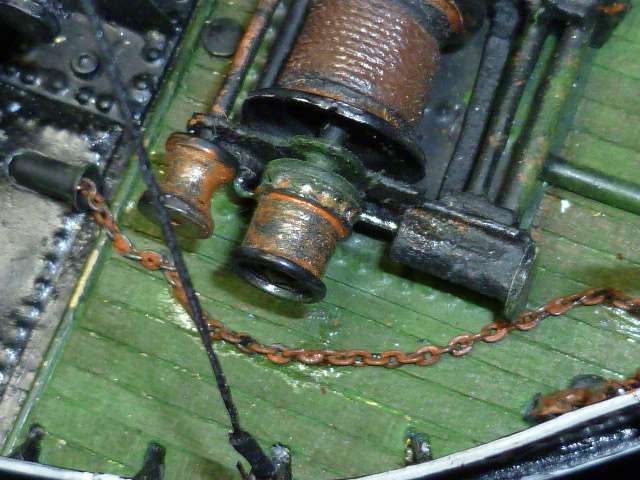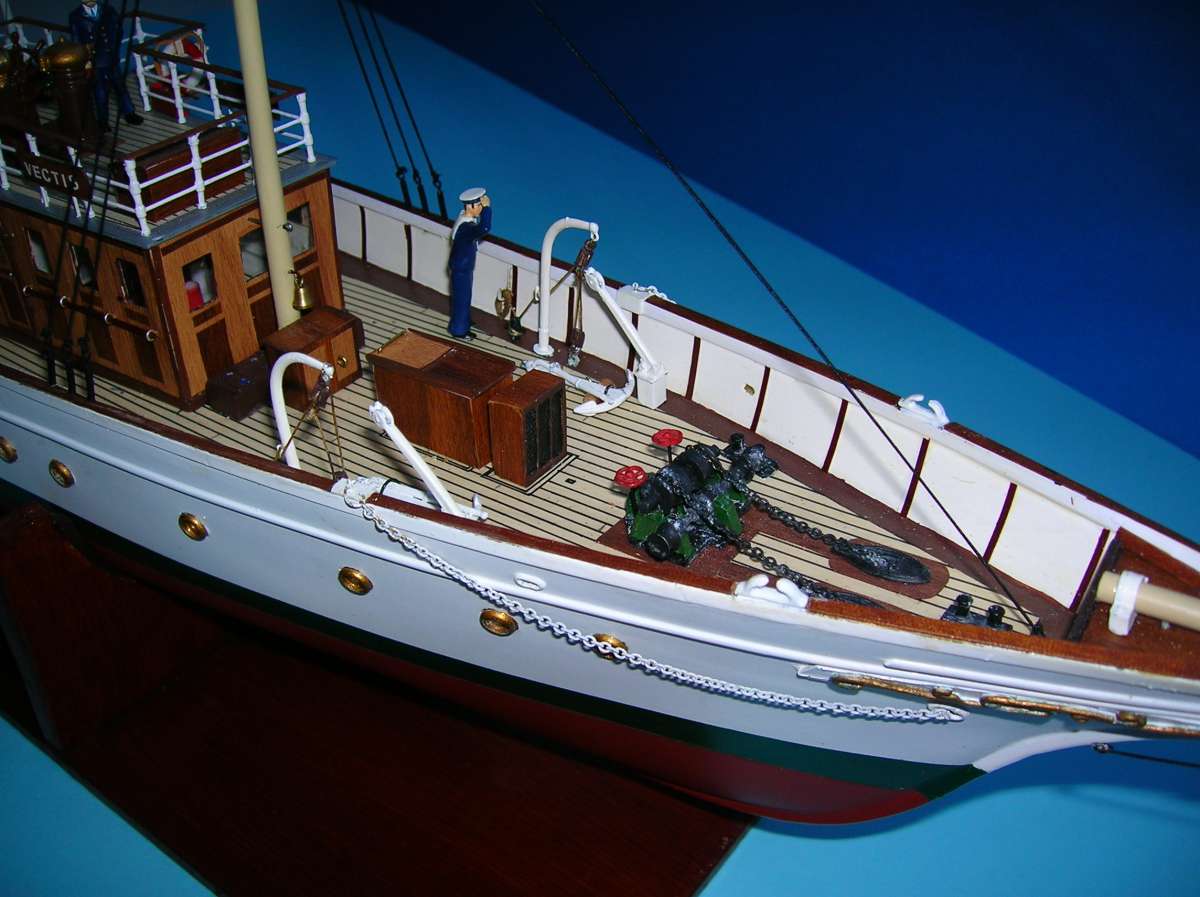Depending on the size, but certainly a Puffer, I would expect the anchors to be held by a stopper. Basically the chain comes out of the chain locker, up through a deck penetration, over the chainwheel of the windlass, down through the hawse pipe and connected to the end of the anchor. The anchor is raised until it locks against the hull striking plates then the stoppers are attached to the chain. These are typically either two bottle screws attached to a link in the chain by shackles, tightened up to take the weight of the anchor, or a locking plate or rod that swings over a link in the chain as it passes through a guide, which is then held down by a bolt, again locking the chain.
When the stoppers are in place the windlass can be backed off to take the load off it as the stoppers take the weight of the anchor.
When you are going to use the anchor the first job is to take the weight with the windlass, put the windlass brake on, remove the stoppers at which point the anchor is said to be “freed” and ready to drop by simply releasing the windlass brake. As the chain pays out you should be able to see the white links pass, which donates another fathom of chain. The bridge will tell the windlass operator how many fathoms of chain to release.
Interestingly the end of the chain is held in the chain locker by the “Bitter End”, which is simply the end of the chain shackled to a doubling plate welded inside the chain locker. During dry dock the anchor chain will be laid out entirely in the bottom of the dock for cleaning and inspection and repainting the fathom markers. The shackle at the bitter end has to be disconnected and a wire rope attached to allow the chain to be completely lowered. It is critical to monitor the state of the brake pads because if the brake pads get worn they over heat and then fail while dropping the anchor so the anchor will go into free fall. Then everyone dives for cover as the bitter end will be ripped out of the chain locker and follow the anchor down to the sea bed.
Also its not the anchor that holds the ship, its the weight of the chain sitting on the sea bed. The anchor simply holds the end of the chain to stop it slipping over the sea bed.
This is a locking rod type of stopper, the chain is positioned in the guide such that a flat link is in the centre, then the locking rod is folded over and tightened down against the piece of angle iron. This holds the link in the guide.
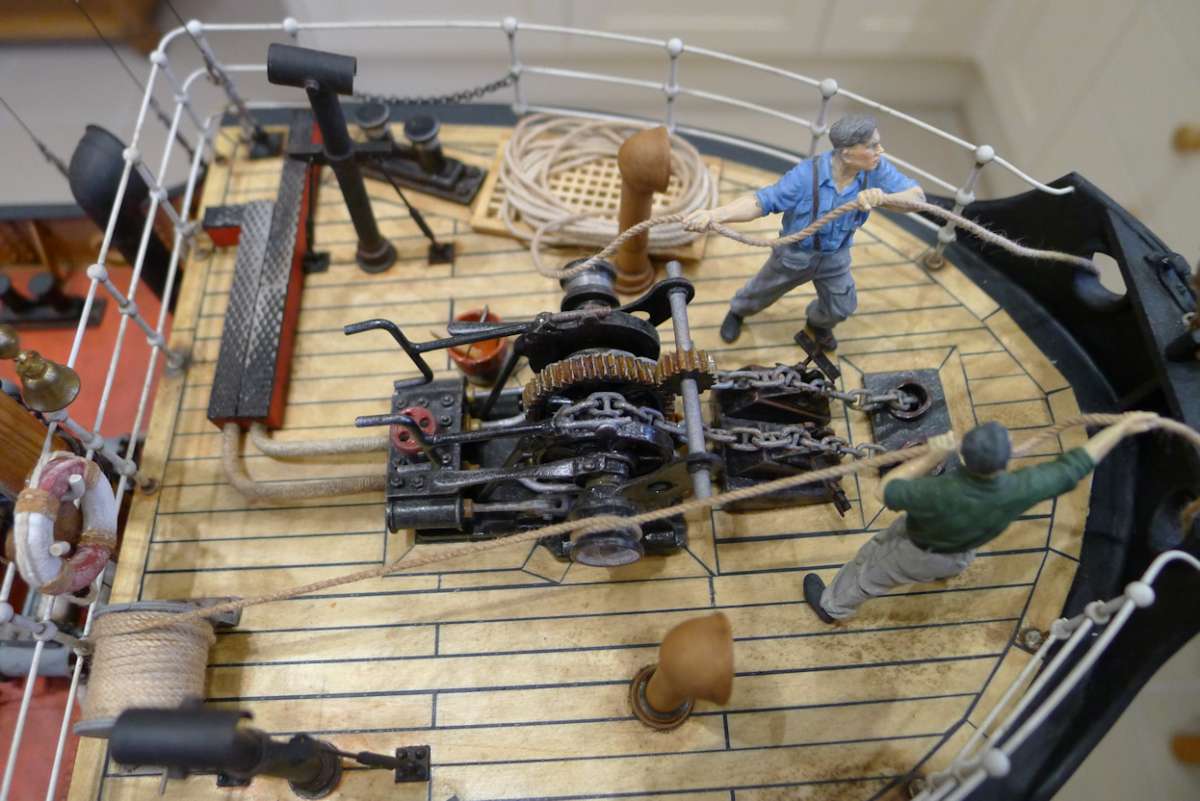
This is an example of using a couple of bottle screws as a stopper. The assembly is rigged to the anchor chain via a shackle and a short wire strop, the bottle screws are tightened up until they share the weight of the anchor then the windlass can be backed off.

 ashley needham.
ashley needham.

